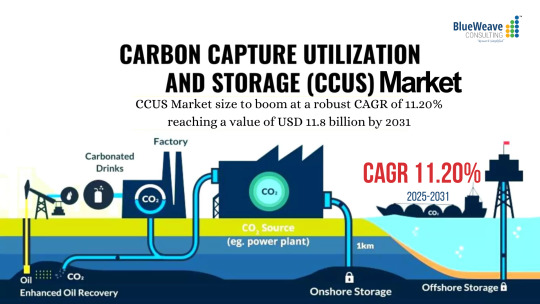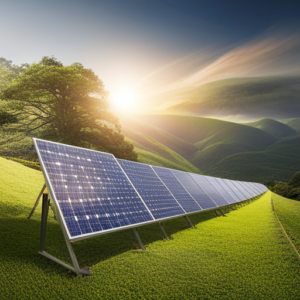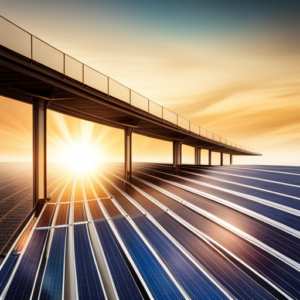#ClimateChangeMitigation
Explore tagged Tumblr posts
Text
https://growbilliontrees.com/pages/mangroves-forests-natures-green-barrier-against-climate-change
#MangroveForests#NatureGreenBarrier#MangroveRestoration#BlueCarbon#ClimateChangeMitigation#CoastalProtection
0 notes
Text
#top college of technology in trichy#krct the top college of technology in trichy#best college of technology in trichy#ClimateResilience#SustainableInfrastructure#GreenEngineering#CivilEngineering#DisasterResilience#FutureCities#GeotechnicalEngineering#ClimateChangeMitigation#InfrastructureInnovation
0 notes
Text

Carbon Capture, Utilization, and Storage (CCUS) Market size by value at USD 5.6 billion in 2024. During the forecast period between 2025 and 2031, BlueWeave expects Global Carbon Capture, Utilization, and Storage (CCUS) Market size to boom at a robust CAGR of 11.20% reaching a value of USD 11.8 billion by 2031. The growth of Global Carbon Capture, Utilization, and Storage (CCUS) Market is driven by increasing government regulations to reduce carbon emissions, rising investments in clean energy technologies, and growing industrial efforts to achieve net-zero emissions. Expanding applications in enhanced oil recovery (EOR), rising adoption in power generation and chemical industries, and technological advancements in carbon capture methods further boost the market growth. Additionally, the emergence of public-private partnerships and increasing incentives are expected to support the development of large-scale CCUS projects globally.
Sample Request: https://www.blueweaveconsulting.com/report/carbon-capture-utilization-and-storage-market/report-sample
Opportunity – Climate Change Mitigation Goals
Global Carbon Capture, Utilization, and Storage (CCUS) Market is driven by stringent climate change mitigation goals set by international agreements like the Paris Accord. Governments and industries are adopting CCUS technologies to achieve net-zero carbon emissions targets. The rising emphasis on reducing industrial CO₂ emissions, particularly in power generation, cement, and steel sectors, further boosts CCUS deployment. Additionally, supportive policies, tax incentives, and funding for research and development enhance the feasibility and adoption of CCUS solutions globally.
#BlueWeave#Consulting#Marketforecast#Marketresearch#EnergyTransition#CarbonCaptureAndStorage#GreenTechnology#SustainableEnergySolutions#ClimateChangeMitigation#LowCarbonEconomy
0 notes
Text

Why Organic Farming Helps the Planet
🌍 Organic Farming: Saving the Planet
Organic farming practices are eco-friendly 🌱:
✅ Soil Health: Organic farming promotes soil fertility and biodiversity. ✅ Water Conservation: Reduced pesticide runoff protects our water. ✅ Climate Resilience: Organic practices help mitigate climate change.
It’s time to make a sustainable choice for the Earth 🌎.
Learn More: https://vatshalgreen.com/ Call Now: +91 78743 79887, +91 75677 79887
#OrganicFarming#EcoFriendly#SustainableAgriculture#SoilHealth#WaterConservation#ClimateResilience#SaveThePlanet#GreenFarming#Biodiversity#PesticideFree#SustainableFarming#ClimateChangeMitigation#OrganicProduce#FarmToTable#EarthFriendly#RegenerativeAgriculture#HealthySoil#OrganicLifestyle#ConserveWater#ProtectTheEarth#FarmingForTheFuture#GrowOrganic#EcoConscious#Sustainability#Agroecology#GreenEarth#PlanetFriendly#SustainableChoice
0 notes
Text
#EUTaxonomy#SustainableFinance#ESG#ComplianceReporting#NetZero#ClimateChangeMitigation#ClimateChangeAdaptation#SustainableInvestments#Inrate#EURegulations#CorporateSustainability#GreenEconomy#EnvironmentalObjectives#SustainabilityGoals#InvestorDecisionMaking#RiskManagement#MarketTransparency
0 notes
Text
Discover the importance of sustainable living and how it benefits the environment, economy, and your health. Learn how adopting sustainable practices can lead to a more balanced and fulfilling life.
#sustainablelivingimportant#sustainablepractices#environmentalprotection#ecofriendlylifestyle#climatechangemitigation
0 notes
Link
Tata Motors, a leading Indian automaker, is experiencing a significant surge in sales for its eco-friendly vehicles. In a recent investor presentation, the company revealed impressive figures for its CNG (Compressed Natural Gas) and electric vehicle (EV) portfolio, showcasing a growth of up to 120% in the 2023-24 financial year. This robust performance reflects a growing consumer shift towards sustainable transportation solutions in India. Tata Motors Revs Up Green Sales Tata's CNG Vehicles: A Clean and Affordable Option While electric vehicles grab most of the headlines, Tata Motors has also been strategically expanding its CNG car offerings. This focus caters to a wider range of budget-conscious buyers seeking cleaner alternatives to traditional gasoline-powered vehicles. The convenience of readily available CNG infrastructure across India makes CNG vehicles an attractive option for many drivers. While details haven't been disclosed about individual CNG models, Tata Motors' overall CNG sales growth suggests a strong consumer response to its offerings. This growth likely stems from a combination of factors, including: Cost-Effectiveness: CNG is a significantly cheaper fuel option compared to gasoline, offering substantial savings on running costs. Lower Emissions: CNG vehicles produce fewer harmful emissions compared to gasoline counterparts, contributing to cleaner air quality. Wider Availability: CNG infrastructure is more widespread than electric vehicle charging stations in India, making CNG vehicles a more practical choice for many drivers. The Rise of Electric Vehicles: Tata Motors Leads the Charge Tata Motors has established itself as a frontrunner in the Indian electric vehicle market. The recent launch of the Tata Punch EV, the company's first electric SUV built on the new Act. ev platform exemplifies this commitment. Let's delve deeper into the features and considerations surrounding this exciting new offering. Tata Punch EV: A Closer Look The Tata Punch EV boasts a futuristic design, a plethora of features, and two battery pack options to cater to diverse driving needs. Here's a breakdown of the key aspects of this electric SUV: Pros: Multiple Battery Pack Options: The Punch EV comes in two battery pack configurations: a 25 kWh and a 35 kWh option. The smaller pack offers a real-world range of around 200 km, while the larger one extends the range to approximately 300 km. These ranges are likely sufficient for most daily commutes within city limits. For those who require their electric vehicle for both city and occasional intercity travel, the larger battery pack is the better choice. However, for strict city driving, the smaller pack offers a cost-effective option. Both battery packs are compatible with DC fast charging, enabling quicker charging on the go. Feature-Rich Interior: The Punch EV doesn't disappoint when it comes to features. It boasts a dual-screen setup with a 10.25-inch touchscreen infotainment system and a digital driver's display. Wireless connectivity for Android Auto and Apple CarPlay adds convenience, while features like automatic climate control with rear AC vents, a sunroof, ventilated front seats, and an air purifier enhance comfort and convenience. Safety is also a priority, with six airbags coming standard alongside electronic stability control (ESC), an electronic parking brake with auto hold, and a tire pressure monitoring system (TPMS). Additionally, a 360-degree camera with a blind view monitor provides exceptional visibility and driver assistance, a rare feature in this car segment. Thrilling Performance: A hallmark of electric vehicles is their instant torque and quick acceleration. The Punch EV delivers in this aspect, offering a peppy and engaging driving experience. The electric motor packs a punch (pun intended!), resulting in a level of performance not achievable in a similarly priced gasoline car. The long-range version of the Punch EV, equipped with a 122 PS electric motor, accelerates from 0 to 100 mph in a brisk 9.5 seconds. Cons: Limited Rear Seat Space: While marketed as an SUV, the Punch EV's interior dimensions make it more suitable for a family of four. The width of the car restricts comfortable seating for three passengers in the back seat. While headroom is adequate, taller passengers might find legroom and under-thigh support a bit cramped. Price Point Considerations: Although electric vehicles offer environmental benefits, their upfront costs are generally higher compared to gasoline-powered counterparts or similar-sized gasoline SUVs. The top-spec variant of the Punch EV exceeds Rs 15 lakh, placing it in the subcompact SUV segment alongside established players like the Tata Nexon and Kia Sonet. FAQs Q: What factors are driving the growth of CNG and electric vehicles in India? A: Several factors are contributing to the rise of CNG and EVs in India, including increasing awareness about environmental concerns, cost-effectiveness of CNG compared to gasoline, and government incentives like the FAME scheme. Q: What are the key challenges in the wider adoption of electric vehicles in India? A: High upfront costs of EVs due to battery technology, limited charging infrastructure, and range anxiety are some of the main hurdles to overcome for widespread EV adoption. Q: What are the potential benefits of a shift towards CNG and electric vehicles? A: The transition to eco-friendly vehicles can lead to cleaner air, reduced dependence on imported fossil fuels, and a more sustainable transportation ecosystem in the long run.
#cleanair#ClimateChangeMitigation#CNGVehicles#ElectricVehicleChargingInfrastructure#electricvehiclesEVs#FAMEScheme#greentransportation#sustainabletransportation#TataMotors#TataMotorsRevsUpGreenSales#tatapunchev
0 notes
Text
UK Funds Tech for Global Prosperity

Elevating Global Livelihoods
In an era where technology serves as the backbone of development, the United Kingdom is taking significant strides to harness the power of mobile innovation to transform lives across the globe. Moreover, with a new funding initiative of £37.3 million, the UK government aims to catalyze change in some of the world's poorest countries, leveraging mobile technology for sustainable growth and prosperity.
Unleashing the Potential of Mobile Tech
A Vision for Development Development Minister Andrew Mitchell's announcement at the Mobile World Congress underscores the UK's commitment to integrating mobile and digital technologies into the fabric of global development. Furthermore, this investment in the Mobile for Development Programme, a collaborative effort with the GSMA and the private sector, is poised to bring transformative solutions to pressing global challenges. Impactful Innovations From AI-driven agricultural advice for Nigerian farmers to pay-as-you-go solar-powered fridges, UK-funded mobile technologies are already making a remarkable difference. These innovations not only improve livelihoods but also address critical issues such as climate change and gender disparity, demonstrating the multifaceted benefits of digital adoption.
A Partnership for Progress
Bridging Gaps, Building Futures The Mobile for Development programme, having already reached over 94 million people, is poised to expand its impact further. With a focus on empowering women and girls, enhancing climate resilience, and scaling up innovative solutions, the UK's latest support aims to benefit an additional 110 million people, including 60 million women. Success Stories of Transformation The programme's success is evident in projects like BaKhabar Kissan in Pakistan, which has dramatically increased its user base by providing critical weather forecasting data to farmers. In Uganda, Ensibuuko's digital skills training for rural savings groups highlights the transformative power of digital literacy, especially for women.
Harnessing Technology for Climate Resilience
Innovating for the Environment The urgency of addressing climate change is integral to the programme's mission. Moreover, by funding projects that leverage AI for agricultural efficiency and digital platforms to reduce food waste, the UK is at the forefront of developing technology-based solutions to environmental challenges. A Renewed Commitment The partnership between the Foreign, Commonwealth and Development Office and the GSMA Mobile for Development Foundation is a testament to the shared vision of leveraging digital innovation for socio-economic and environmental impact. Additionally, this renewed commitment promises to amplify the benefits of mobile technology for the most underserved populations.
The Road Ahead
A Catalyst for Change As the Mobile World Congress showcases the latest advancements, the UK's investment in mobile technology for development stands out as a beacon of hope. By supporting tech entrepreneurs and fostering innovation, this initiative not only promises to boost livelihoods but also to pave the way for a more inclusive and sustainable future. Sources: THX News, Foreign, Commonwealth and Development Office & The Rt Hon Andrew Mitchell MP. Read the full article
#Climatechangemitigation#digitalskillstraining#empoweringwomenandgirls#globalchallengessolutions#GSMApartnership#innovativemobiletechnology#MobileforDevelopmentProgramme#sustainablegrowththroughtechnology#techentrepreneurs#UKfundingformobiletechnology
0 notes
Text
Pakistan's Battle with Climate Change Effects on Society and Human Welfare
Pakistan, where climates converge in a single dance from the K2 icy peaks to Karachi's coastal trance. In this varied weathered romance where the dance of economics is found in parallel. Surrounded by titans, east to west, economic climaxes, a symphony of relish.
A canvas painted with carbon's tale, where 250 million souls set their sail. Amidst billions to demand so high in the sky it soars, reaching the heavens nigh. A battle expands against climate's range of Pakistan, a warrior in the winds of change.
#PakistanClimateAction#ClimateChangeImpacts#SustainablePakistan#ClimateResilience#HumanWelfare#ClimateActionPK#EnvironmentalJustice#ClimateAdaptation#CommunityResilience#GreenPakistan#ClimateActionNow#SocialImpactPK#AdaptationStrategies#ClimateAwareness#ResilientCommunities#SocietyandClimate#ClimateChangeMitigation#WelfareInFocus#EcoFriendlyPakistan#ClimateActionForAll
0 notes
Link
#BoschEngineering#BoschRexroth#climatechangemitigation#decarbonizedeconomy#electricboat#Futurride#InternationalMaritimeOrganization#maritimeprofessionalsector#noisepollution#Nyköping#RobertBosch#SafeHarborMarinas#Stockholm#sustainableboating#sustainablemobility#Sweden#XShore#XShore1#XShoreEelex8000#XShorePRO
0 notes
Text
Solar Panel Efficiency: Solving the Puzzle of Solar Panels

Solar panels have become a symbol of optimism in the search for sustainable energy. These gadgets, seen on roofs and fields worldwide, can harness the sun's energy and turn it into electricity. And yet, how do they accomplish this feat? Why, then, are they only 20% effective? This tutorial will answer these questions and many more as it delves into the intriguing realm of solar panel efficiency. We'll delve into the research behind solar panels to learn more about how they work, what limits their efficiency, and where we could go from here. So, let's set out on an adventure to uncover the truth about solar panel efficiency.
An in-Depth Look at Solar Panel Efficiency

Solar Panel Efficiency The Efficiency of Solar Panels: An Overview The efficiency of a solar panel is its ability to convert energy from sunshine into a valuable form of energy. It's important because it affects how well and cheaply a solar power system works. A solar panel's efficiency indicates how much power it generates from a given quantity of sunshine. But what exactly does "20 percent efficiency" entail when applied to solar panels? This implies that the panel can only convert 20% of the sunlight falling on it into usable power, while the other 80% is either reflected or dissipated as heat. How Solar Panels Work: The Science Photovoltaics is the underlying technology behind solar panels. Semiconductor material, often silicon, in the solar panel soaks up the sun's rays. The silicon's electrons are jarred free as a result. The liberated electrons are collected and used to generate electricity. The quality of the semiconductor, the brightness of the sunlight, and the panel's orientation all contribute to the process's overall efficiency.
Exactly why do Solar Panels Only Produce a 20% Yield?
Science Behind Harnessing Solar Power Semiconductor materials' physical features set a ceiling on solar panels' efficiency. The most prevalent material, silicon, is limited in the light wavelengths it absorbs. This implies that a significant fraction of the sunlight that strikes a silicon solar panel is either reflected or converted to heat rather than electricity. This is a significant factor in why the efficiency of solar panels is only about 20%. The Efficiency of Solar Panels and it is Limiting Factors. Other variables may lower a solar panel's efficiency in addition to the constraints of the semiconductor material. For instance, when temperatures rise, the efficiency of solar panels decreases. This is because a rise in temperature makes the semiconductor's electrons flow faster, making it more difficult to trap them and convert them into electricity. This is why solar panels are often positioned at an angle away from the roof for cooling. In addition to shade from trees and other buildings, dust and debris on the panel's surface may diminish efficiency by obstructing sunlight.
Does 100% Efficiency Exist for Solar Panels?

Does 100% Efficiency Exist For Solar Panels? Efficiency of Solar Panels, Up to Their Thermodynamic Limit The quick response is "No." The laws of thermodynamics limit the highest solar panel efficiency, which regulates energy conversion processes. This threshold, the Shockley-Queisser limit, is about 33 percent for solar panels made from silicon. A silicon solar panel can only convert roughly a third of the sunlight that reaches it into power, even under ideal circumstances. Quantum Physics' Impact on Harvesting Solar Power Quantum physics presents exciting potential for increasing solar panel efficiency beyond the thermodynamic limit. There are some exciting prospects for increasing the efficiency of solar panels that may be gleaned from quantum physics. The efficiency of solar panels may be significantly improved, for instance, if they could use "multiple exciton generation" to produce many electrons from a single photon of light. However, more development of this technology is required before it can be used in a commercial setting, which might take many years or even decades.
The Quest for Greater Efficiency
The Increasing Effectiveness of Solar Panels Over Time Technology and materials science improvements have led to a steady rise in solar panel efficiency. Panel efficiency was below 15% in the early days of solar electricity. Currently, available solar panels have an efficiency of above 22%. Improvements in solar cell design and manufacture, advancements in semiconductor materials, and new technologies like thin-film solar cells and concentrator photovoltaics have all contributed to this efficiency boost. Improvements in technology have led to more efficient solar panels. The efficiency of solar panels is rising thanks to many cutting-edge technological developments. New semiconductor materials like perovskite are being used, and "multi-junction" solar cells are being developed to absorb a broader light spectrum. Absorb as much of the sun's spectrum as possible, multi-junction solar cells are built using numerous layers of semiconductor materials. Consequently, they can generate more power from the sunlight on them.
Will Solar Panel Efficiency Increase to 30%?

Will Solar Panel Efficiency Increase To 30%? Solar Panels with High Efficiency and Their Future Multi-junction panels and those constructed from novel materials like perovskite have the potential to surpass the Shockley-Queisser limit, which establishes a theoretical maximum efficiency of roughly 33% for single-junction silicon-based solar panels. Within the next decade, according to some experts, solar panels with an efficiency of 30% or more may be accessible commercially. Achieving this efficiency level would be a huge step forward since it would lower the price of solar electricity and make it a more competitive option against fossil fuels. Efficiency Improvements in Solar Panels: Recent Studies A lot of study is being put into improving the efficiency of solar panels right now. Scientists and engineers from all around the globe are constantly exploring the limits of what is possible by trying out new materials, designs, and production methods. Perovskite solar cell development, nanotechnology for enhanced light absorption, and innovative solar cell layouts that can absorb more of the sunlight that falls on them are some of the most promising areas of study.
Which Solar Panels Have the Highest Efficiency?
The Efficiency of Solar Panels Breaks All Previous Records. Researchers at the National Renewable Energy Laboratory (NREL) in the United States have produced a multi-junction solar cell with an efficiency of 39.2%, setting the current record for solar panel efficiency. However, this is just a record in the lab; commercial solar panels have yet to reach these levels of efficiency. Currently, the highest efficiency commercial solar panels on the market are approximately 22-23% efficient. Efficiency Improvements in Solar Panels Solar panels with ever-increasing efficiency as research proceeds and new technologies emerge. While perfect solar panels are theoretically impossible owing to physical constraints, the future of solar panel efficiency seems promising. Solar energy is becoming a more competitive energy source as efficiency continues to rise, and it might play a significant part in our energy future.
Solar Panels: Characteristics and Performance
Solar Panel Types: A Comparison You may choose from many different solar panel styles, each with advantages and disadvantages. Separate efficiency scores for each. Monocrystalline solar panels, typically black and have an efficiency of 15% to 20%, are now the most efficient form of solar panel commercially accessible. Polycrystalline solar panels are less expensive than monocrystalline panels despite their blue tint and somewhat lower efficiency. Thin-film solar panels are the most flexible and lightweight but have the lowest efficiency. Comparison of Common Solar Panel Manufacturers' Efficiency There is also a wide range of efficiency ratings across solar panel manufacturers. The most efficient solar panels on the market, with efficiencies of over 20%, are made by companies like SunPower and LG. Affordable alternatives with somewhat lower efficiency may be found from manufacturers like Canadian Solar and Trina Solar.
Influencing Factors on Solar Panel Performance
Temperature's Role on Solar Panel Performance Since solar panels lose efficiency as their temperature rises, it is common practice to provide space between the panel and the roof so that hot air may escape. Especially in warmer locations, this temperature coefficient should be considered while selecting solar panels. The Importance of Direct and Reflected Sunlight to Solar Energy Generation The efficiency of solar panels is also affected by the amount of sunshine they receive and the direction from which it comes. When the sun is at its highest position in the sky and beaming directly onto the panels, it generates the most tremendous power. That's why many people in the Northern Hemisphere put solar panels on their south-facing roofs and the opposite in the southern hemisphere on their north-facing roofs. Solar tracking devices may be employed to boost efficiency further to shift the panels in the sun's direction throughout the day.
Improving the Performance of Solar Panels
Increasing Productivity Using Solar Trackers Increase the efficiency of solar panels. Solar trackers are used to move the panels to track the sun as it travels across the sky. Solar trackers may be divided into two categories: those that follow the sun from east to west and tilt to keep up with the sun's arc across the sky. Although solar trackers may boost the efficiency of a solar power system by as much as 30%, they are also more costly and need more maintenance than permanently installed solar panels. Effects of Anti-Reflection and Dual-Faced Designs Bifacial designs may catch sunlight reflected off the ground onto the rear of the panel, further boosting efficiency. At the same time, anti-reflective coatings can assist solar panels in absorbing more sunlight and converting it into power. Anti-reflective coatings enable solar cells to absorb more light by decreasing the light reflected from their surfaces. However, bifacial solar panels can harness energy from direct sunlight and reflected light due to their double-sided light-absorbing construction.
Efficiency and Expense of Solar Panels
Cost-Effectiveness Analysis of Solar Panels Solar panels with better efficiency may generate more power but at a higher cost. Therefore, it is essential to weigh whether or not the extra power produced by high-efficiency panels is worth the more excellent initial investment. Do the Benefits of Greater Efficiency Always Justify the Price? Over the panels' useful lifespan, the savings on power costs often exceed the initial investment in the more expensive high-efficiency solar panels. However, this is conditional on many variables, such as the price of power where you live and the quantity of sunshine available there. High-efficiency solar panels are a fantastic option for places with high power costs and plenty of sunshine.
How Efficiently Solar Panels Can Power Your House
What Effect Does the Efficiency of Your Solar Panels Have on You?
Your Monthly Electric Bill and the Performance of Your Solar Panels
The more power your solar panels can generate, the less you'll have to spend on your monthly energy bill. This is paramount if you reside in a region where power is expensive. By switching even a percentage of your energy use to solar power, you may save your annual electricity costs by hundreds, if not thousands, of dollars. Which Solar Panels Are Best for Your House? Before making a final purchase, you should weigh the solar panels' efficiency against their price, their lifespan, and the quantity of sunshine available where you live. You should consult a solar contractor to determine which panels work best for your home. They will evaluate your home's solar potential, determine the size of the solar power system you need, and provide product and brand recommendations based on your needs.
The Effects on the Planet of Inefficient Solar Panels
Solar Energy's Impact on Reducing Carbon Emissions Solar panels may play a significant part in reducing the effects of climate change by turning sunlight into power without releasing greenhouse gases. The better the efficiency of the panels, the more power they can generate and the less of an impact they will have on the environment. Improving Solar Panel Efficiency and Its Impact on the Environment Compared to less efficient panels, higher-efficiency solar panels generate more power from the same amount of sunshine, reducing your reliance on fossil fuels and overall carbon footprint. If you want to help the world fight to prevent climate change, one thing you can do is put high-efficiency solar panels on your house.
The Solar Panel Efficiency, Worldwide
Solar Energy's Impact on Securing Energy Self-Sufficiency By harnessing the sun's energy, nations may lessen their reliance on foreign fossil fuel imports and strengthen their energy independence. The greater the efficiency of their solar panels, the more money they will save using solar energy. The Importance of Solar Energy to the Economy and the Creation of New Jobs The solar sector can contribute significantly to employment and economic growth. With the efficiency of solar panels increasing and the price of solar power decreasing, the solar energy sector is expected to continue expanding, creating new employment and economic stimulus for countries all over the globe.
Efficiency Improvements in Solar Panels

Improving The Performance Of Solar Panels Perovskite Cells and Other Solar Energy Breakthroughs The efficiency of solar panels might be significantly improved in the future with the help of new technologies like perovskite solar cells. There is much hope for the future of solar energy in the form of these technologies, which are still in the early phases of development. The Future of Solar Power in the Next Decades The efficiency of solar panels is expected to increase over the next several decades because of continued research and development. As it does, solar energy will play a more prominent role in our energy system, allowing us to cut emissions that contribute to global warming.
The Effectiveness of Solar Panels, Final Thoughts
While there is much to learn about solar panel efficiency, we must do so. The extent to which we can save money on our power bills, lessen our influence on the environment, and increase our energy independence depends on our solar panels' efficiency. Increasing solar panels' efficiency will be crucial to realizing solar power's full potential. It is reasonable to expect solar energy to assume an even more central position in our daily lives and the global economy in the not-too-distant future, thanks to the prospects offered by emerging technologies and the unrelenting pursuit of innovation. Read the full article
#ClimateChangeMitigation#EnergyIndependence#FutureofSolarEnergy#Photovoltaics#RenewableEnergy#SolarEnergy#SolarIndustry#SolarPanelEfficiency#SolarPowerSystem#SolarTechnology
0 notes
Text
Algae and Climate Change Mitigation Strategies
https://supedium.com/phycology/algae-and-climate-change-mitigation-strategies/ #Algae #biofuels #Carbonsequestration #climatechangemitigation #Renewableenergy #Sustainability Algae and Climate Change Mitigation Strategies https://supedium.com/phycology/algae-and-climate-change-mitigation-strategies/
0 notes
Text
"Capturing Tomorrow's Carbon: The Promise of Carbon Capture and Storage 🌱"
Carbon capture and storage (CCS) technology holds immense promise in our efforts to combat climate change and reduce greenhouse gas emissions.
By capturing carbon dioxide from industrial processes and power plants, CCS prevents this harmful greenhouse gas from entering the atmosphere, where it contributes to global warming. With hashtags like #CarbonCapture, #CCS, #ClimateChangeMitigation, #CleanEnergy, #Sustainability, #RenewableEnergy, #GreenTechnology, #EnvironmentalProtection, #ClimateAction, #CarbonEmissions, #EnergyTransition, #NetZero, #ClimateSolutions, #GreenFuture, and #CarbonNeutral, the ongoing conversation surrounding CCS underscores its importance in achieving climate goals and creating a more sustainable future. As the world transitions towards cleaner energy sources, CCS technology offers a crucial pathway to decarbonizing industries that are challenging to electrify. Through continued research, innovation, and investment, CCS has the potential to play a significant role in addressing climate change and securing a better future for generations to come. 🌍🌿
0 notes
Text
During the Himalayan Hydro Expo 2024, or... #alternativeenergysources #biogasdigesters #biomassenergyutilization #biomassgasification #carboncredittrading #carbonfreefuelalternatives #cheapest #cleancookingsolutions #cleanenergyinnovations #cleantechstartups #climatechangemitigation #climatetechinvestments #concentratedsolarpower #decarbonizationefforts #distributedenergysystems #ecofriendlypower #electricvehicleadoption #emissionfreeelectricity #Energy #energyaccesschallenges #energyefficiencymeasures #energyentrepreneurship #energypovertyalleviation #energystoragetechnologies #energytransitionstrategies #fossilfuelalternatives #geothermalenergyopportunities #greenbusinessincubators #greenenergyinitiatives #greenhydrogenproduction #Himalayanbusinesslandscape #Himalayaneconomicgrowth #Himalayaneconomicintegration #Himalayanmarketpotential #Himalayanmarkettrends #hydrogen #hydrogenenergytechnology #hydrogenfuelcells #hydropowerpotentialinNepal #Kathmandubusinessclimate #kathmandubusinessevents #Kathmandustartupaccelerators #Kathmandustartupincubators #Kathmandustartupscene #microgrids #nepalbusinessclimate #Nepalbusinessnetworking #nepalbusinessnews #nepalbusinessopportunities #nepalbusinessregulations #Nepalcorporatescene #Nepaleconomicdevelopment #nepaleconomicpolicies #Nepalfinancialsector #Nepalforeigninvestment #Nepalindustrialgrowth #Nepalinvestmentclimate #Nepalinvestmentopportunities #Nepalmarketsize #Nepalstockexchangeinsights #Nepaltradepartnerships #Nepaltradeprospects #Nepalibusinesschallenges #Nepalibusinesscompetitiveness #Nepalibusinessexpansion #Nepalibusinessinnovations #Nepalibusinessleadership #Nepalibusinessstrategies #Nepalieconomytrends #Nepalientrepreneurialspirit #Nepalientrepreneurship #Nepalimarketanalysis #Nepalimarketdynamics #Nepalimarketentrystrategies #Nepalimarketforecasts #Nepalimarketresearch #Nepalimarketsegmentation. #Nepalimarketupdates #Nepalistartupecosystem #Nepalistartupfunding #Nepalistartupsuccessstories #Nepalquot #netzeroemissionstargets #offgridpowersolutions #produced #quotWorld039s #renewableenergystartupsinNepal #renewablepowersources #rooftopsolarinstallations #ruralelectrificationprojects #smallscalewindturbines #smartgridintegration #solarpanelmanufacturing #solarpowergeneration #SouthAsianenergyproduction #sustainabledevelopmentgoals #sustainableenergyfinancing #sustainableenergysolutions #sustainabletransportation #wastetoenergysolutions #windenergyprospects #windfarmdevelopment
0 notes
Text
Biofuel Evolution: Unleashing Potential in Second Generation Biofuels Market 2024-2033
The Second Generation Biofuels market is poised to witness remarkable growth and innovation from 2024 to 2033, driven by the increasing focus on sustainable energy solutions, climate change mitigation, and advancements in biofuel production technologies. Unlike first-generation biofuels derived from food crops such as corn and sugarcane, second-generation biofuels are produced from non-food biomass sources such as agricultural residues, forestry waste, and algae. This shift towards advanced biofuels not only addresses concerns regarding food security and land-use competition but also offers significant environmental benefits, including reduced greenhouse gas emissions and land degradation.
Technological advancements in biofuel conversion processes, including biochemical and thermochemical pathways, are enhancing the efficiency, scalability, and cost-effectiveness of second-generation biofuel production. Innovations such as enzymatic hydrolysis, gasification, and pyrolysis enable the conversion of a wide range of biomass feedstocks into biofuels such as cellulosic ethanol, renewable diesel, and biogas. Moreover, the integration of biorefinery concepts, which facilitate the production of multiple value-added products from biomass feedstocks, enhances the economic viability and sustainability of second-generation biofuel projects.
Furthermore, supportive government policies, incentives, and mandates aimed at reducing carbon emissions and promoting renewable energy adoption are driving investment and market growth in the second-generation biofuels sector. Initiatives such as renewable fuel standards (RFS) and low-carbon fuel policies create market demand and provide a stable regulatory framework for biofuel producers, encouraging investment in research, development, and commercialization. Additionally, partnerships between industry players, research institutions, and government agencies foster collaboration and knowledge exchange, accelerating innovation and market penetration of second-generation biofuels. As the world seeks to transition towards a low-carbon economy, second-generation biofuels emerge as a key enabler in achieving sustainable energy goals and mitigating the impacts of climate change.
#SecondGenerationBiofuels #SustainableEnergy #ClimateChangeMitigation #BiofuelProduction #RenewableEnergy #BiomassConversion #BiofuelTechnology #Biorefinery #GovernmentPolicies #RenewableFuelStandards #LowCarbonFuel #Innovation #Collaboration #ClimateAction #GreenEconomy
0 notes
Photo

This 28 March 2020 at 8:30 PM I pledge to act for the planet by supporting @earthhour. Join me. Use #YourPower at earthhour.org
#EarthHour#Earth#PlanetEarth#SaveThePlanet#NatureConservation#nature#conservation#environment#environmentalism#EnvironmentalMovement#EnvironmentalStewardship#HumanImpactOnTheEnvironment#climate#ClimateChange#ClimateChangeMitigation#GlobalWarming#CarbonFootprint#sustainability
1 note
·
View note